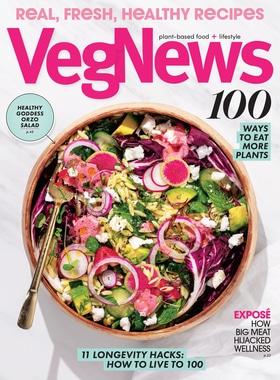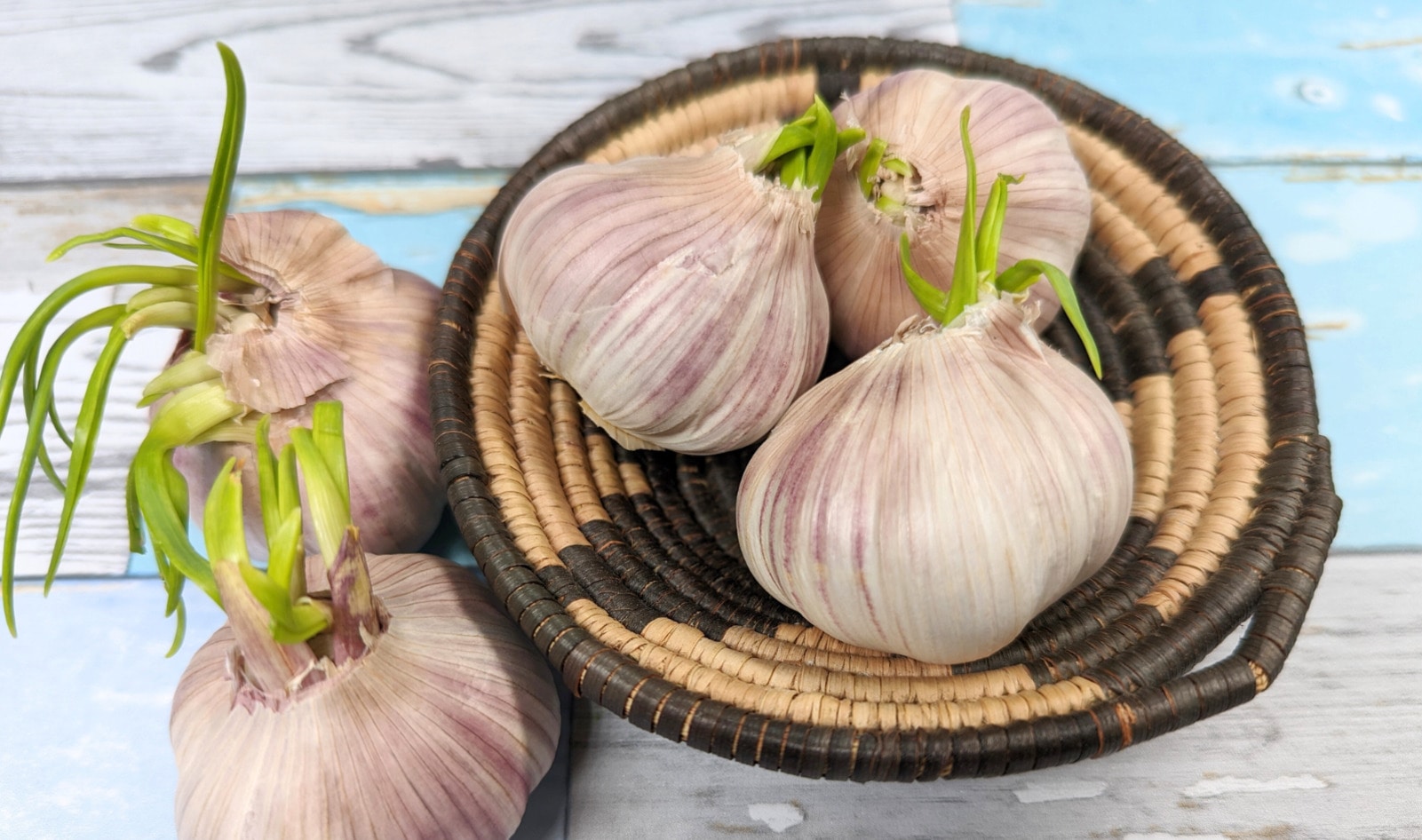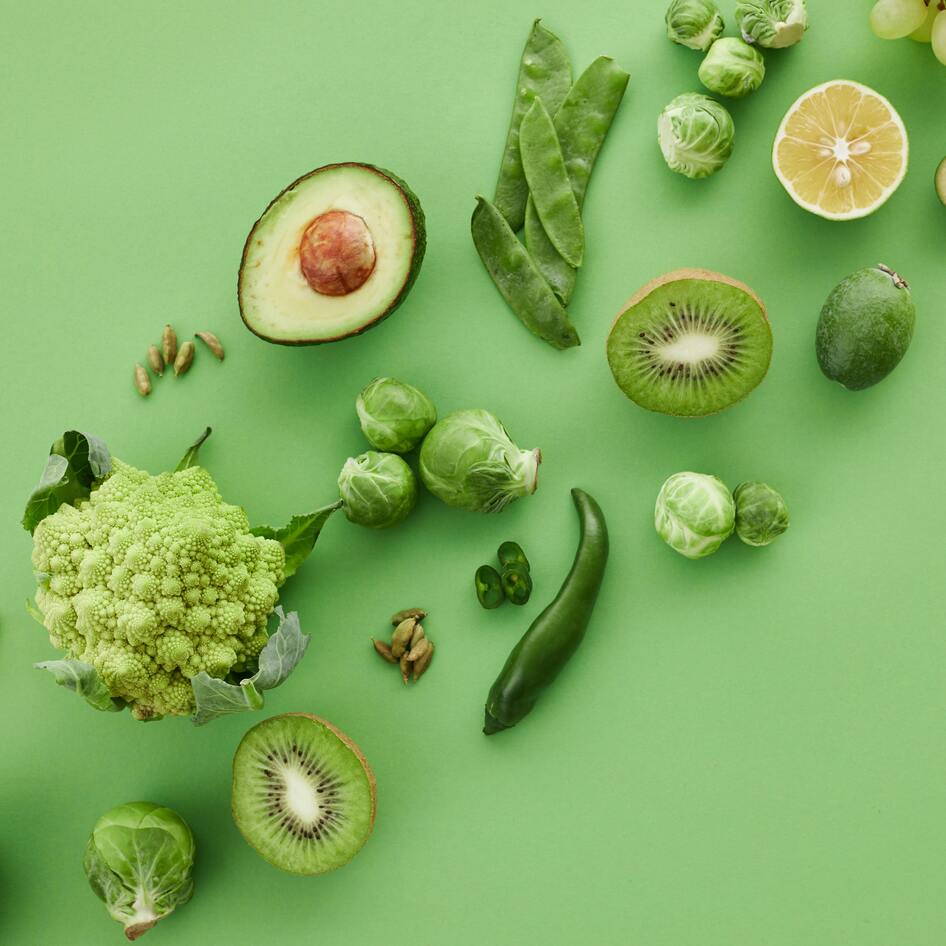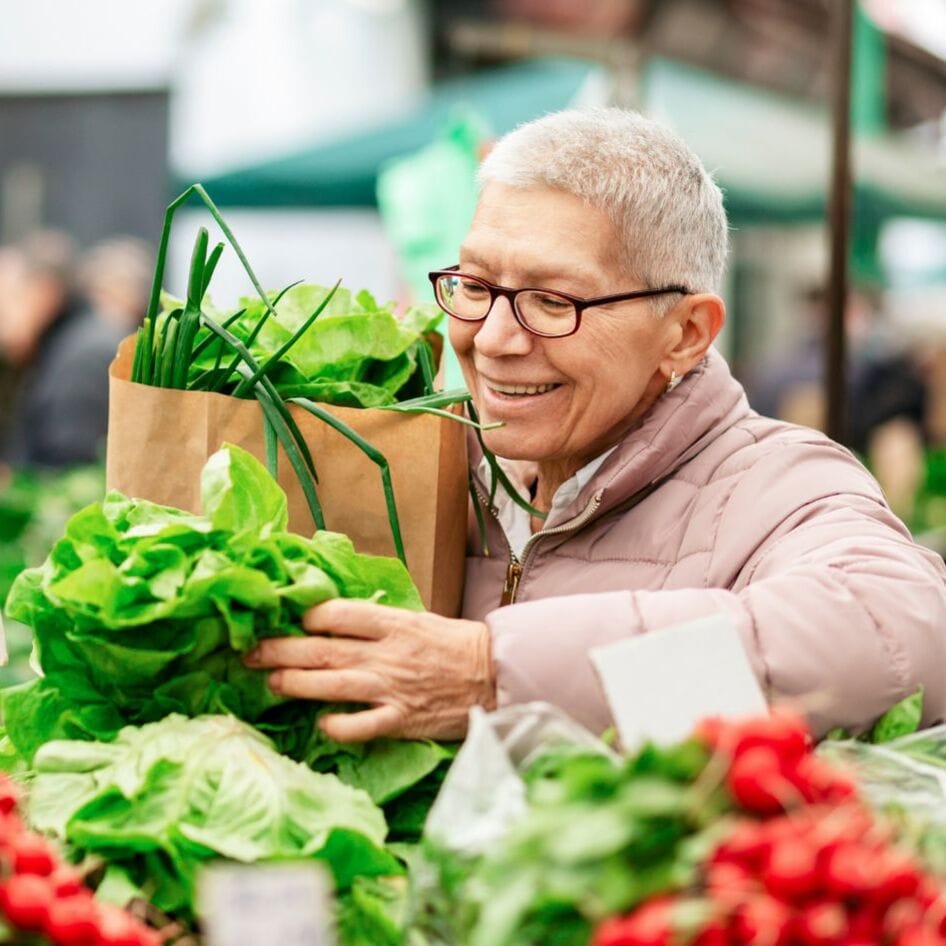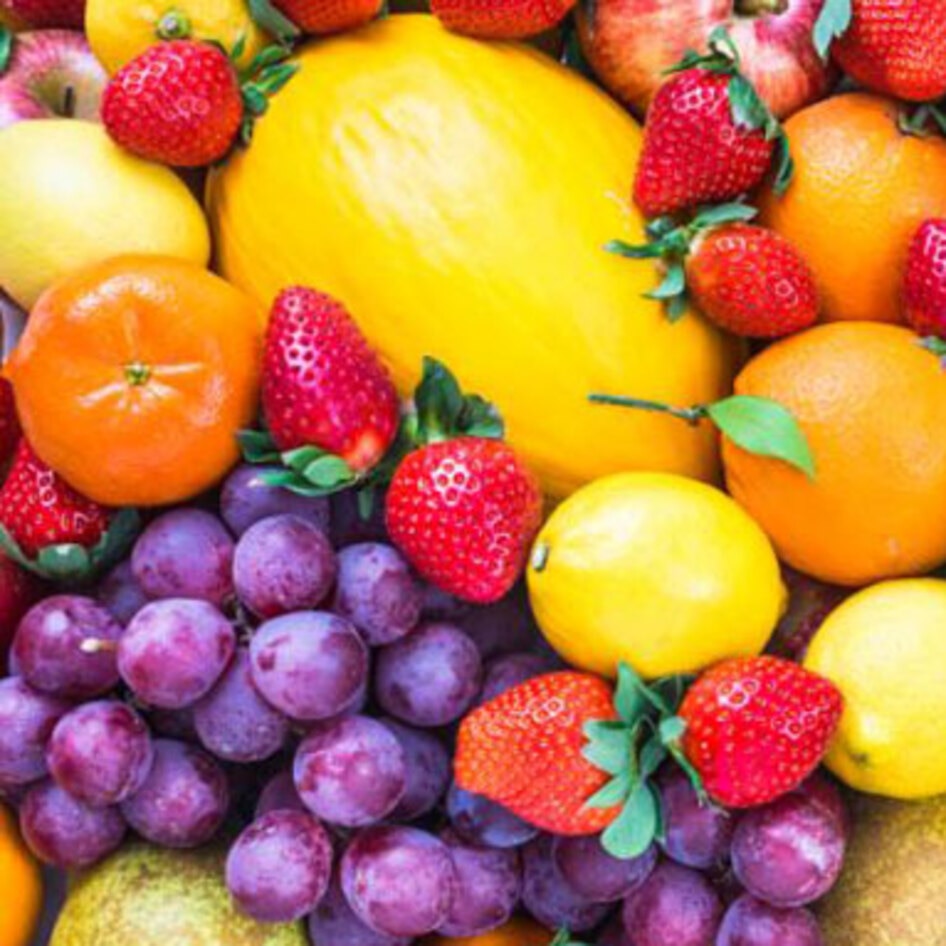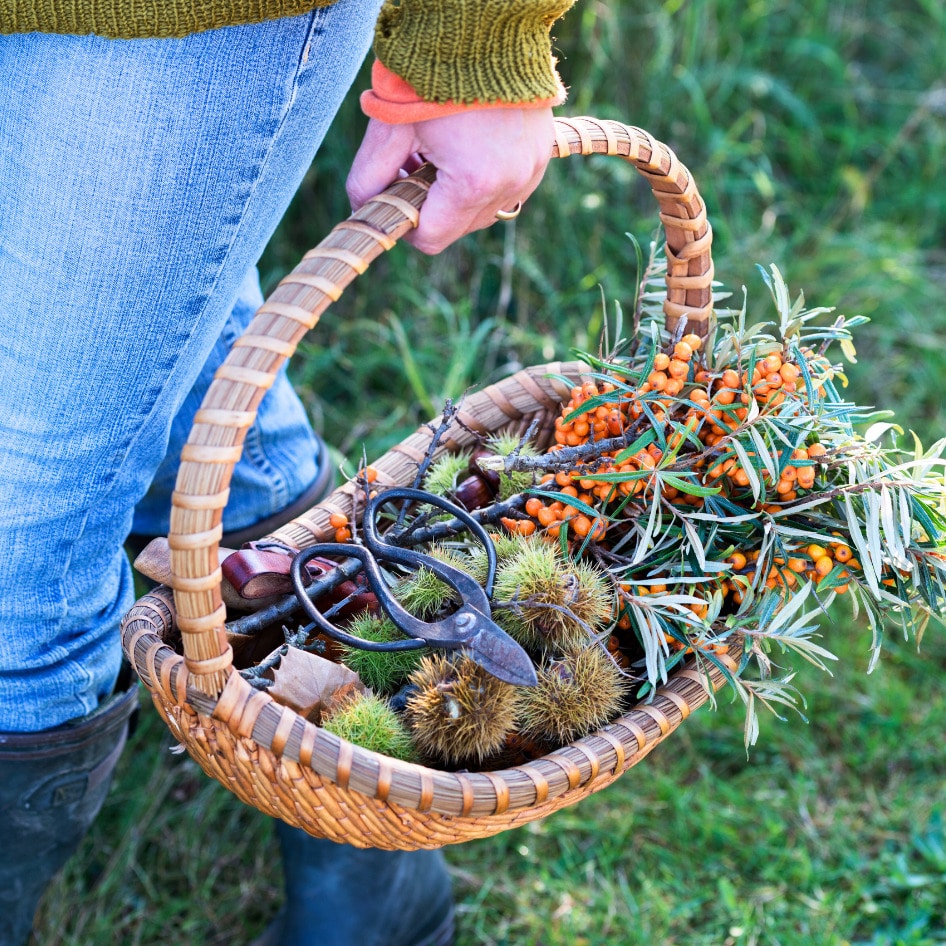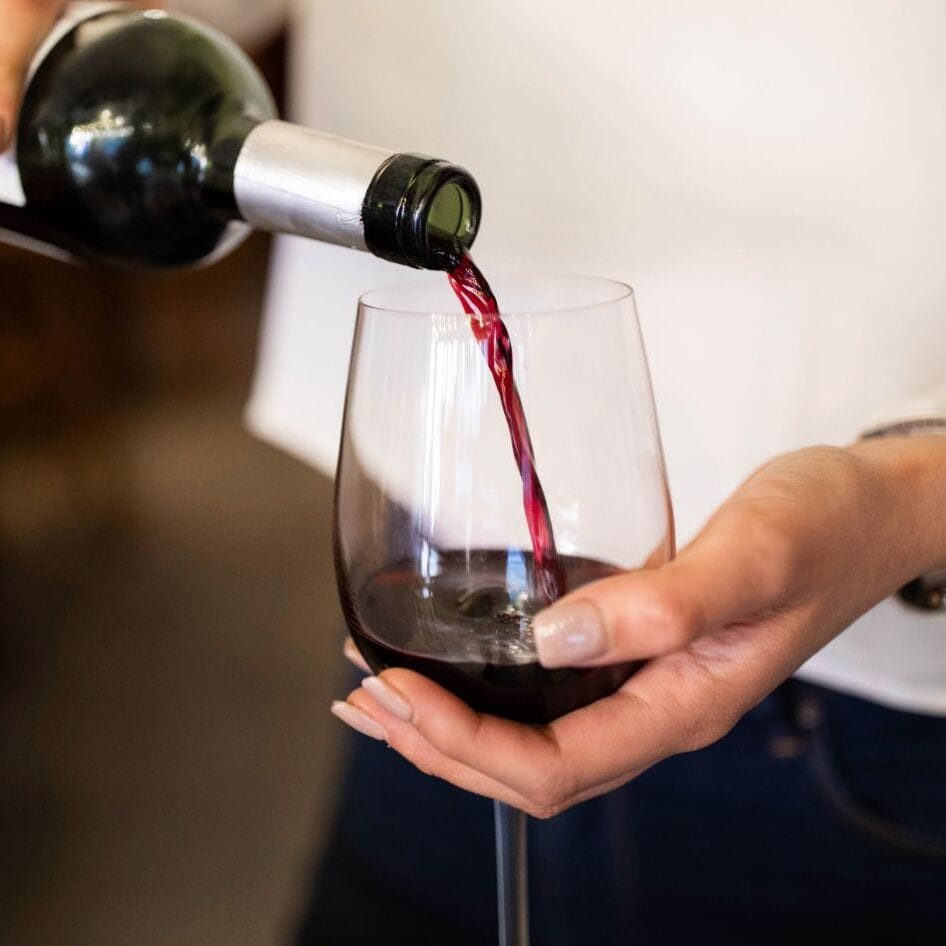Garlic is one of the most beloved ingredients in American kitchens, and it’s easy to see why—so many cuisines rely on it. Italian dishes, for example, wouldn’t be the same without garlic in classics like aglio e olio pasta. It’s also essential in Greek tzatziki, Thai curry pastes, and Korean marinades, adding depth and flavor to each dish.
While pre-chopped garlic or garlic salt are convenient, many passionate home cooks swear by using fresh garlic. But what happens when you open the pantry and discover your garlic has sprouted? Don’t worry—the meal isn’t ruined. Here’s what you need to know about whether it’s safe to eat sprouted garlic (spoiler: you’ll probably be just fine), and how to prevent it from happening again.
Is it safe to eat sprouted garlic?
Sprouted garlic is easy to spot. Basically, it looks like a green shoot emerging from the top of the bulb. If you notice your garlic has sprouted, don’t worry; it doesn’t mean it has spoiled. It just means that you have accidentally created the right conditions for the garlic to start growing. Garlic is a living organism, and it has the capacity to grow new plants if it is stored in a humid environment; warmth and light can also encourage the garlic to sprout.
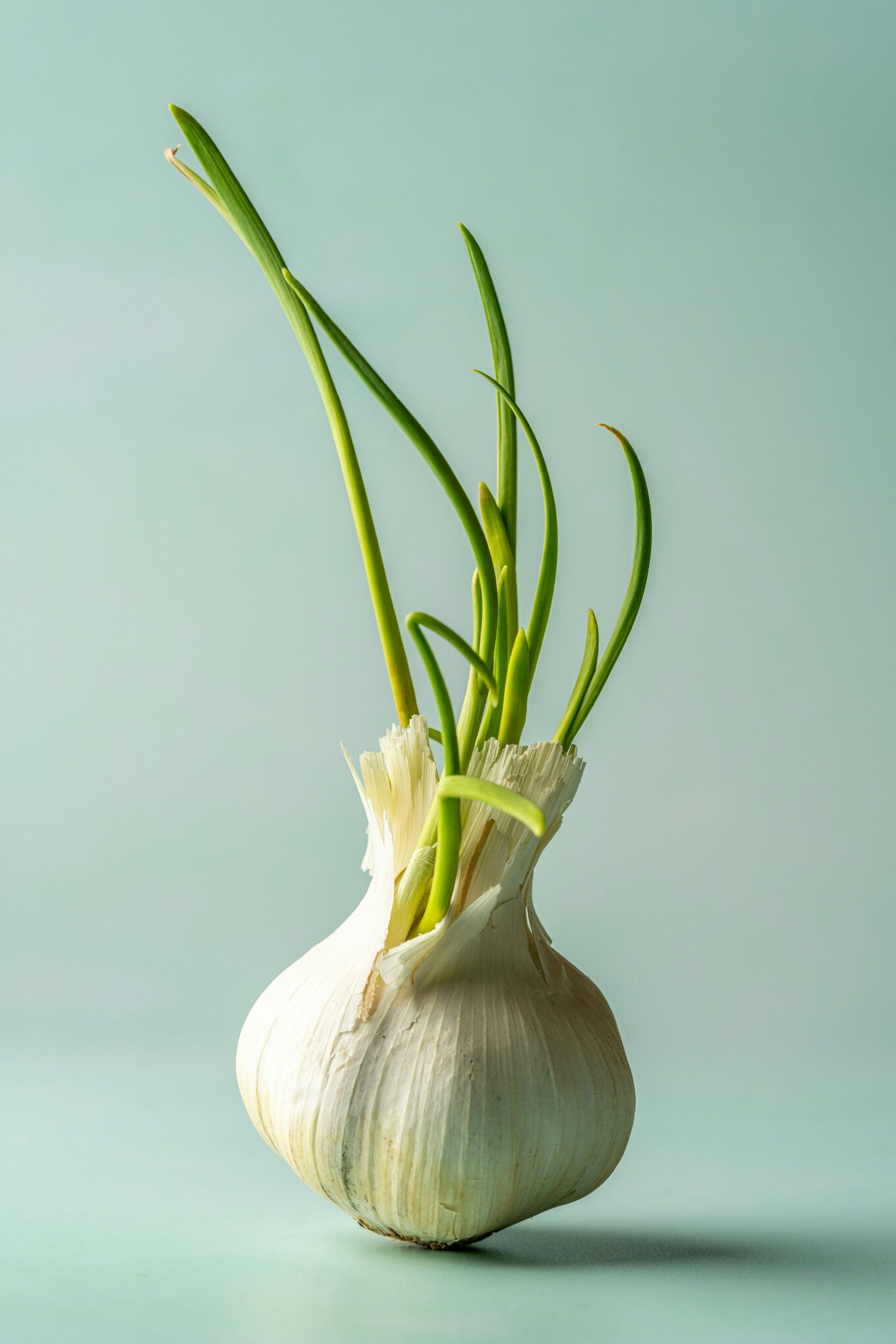 Unsplash
Unsplash
The good news: sprouted garlic is not unsafe to eat. If you choose to cook with it, it is very unlikely to cause you any ill effects. “If you see small, tender green shoots off the garlic or even within the garlic bulb, it just means the garlic is reproducing itself,” Richard LaMarita, chef-instructor of Plant-Based Culinary Arts at the Institute of Culinary Education, told Simply Recipes. “It’s completely natural and completely safe.”
However, it’s important to note that sprouted garlic might not taste as good as fresh garlic. When it starts to grow new shoots, it usually means the vegetable has been hanging around a while, and the flavor may not be as strong.
According to Food Network, garlic bulbs will usually last up to six months (if stored in the right conditions—more on that below). If the bulbs start to brown or shrivel, or they are soft and mushy to the touch, it’s probably best not to eat them. They won’t taste nice for starters, but they could also pose a potential health risk. “Fresh garlic should be plump and firm and tightly wrapped in its papery skin,” explained LaMarita.
 Unsplash
Unsplash
In very rare cases, spoiled garlic could even lead to botulism. This is a serious foodborne illness caused by a toxin produced by Clostridium botulinum bacteria, which can thrive in low-oxygen environments, such as in improperly stored garlic. It’s worth noting that the risk is higher if the garlic has been stored in oil.
How to stop garlic from sprouting
Eating sprouted garlic is pretty unlikely to cause you any major problems, but as we mentioned earlier, it might not taste quite as good as fresher garlic.
To prevent sprouting from happening, it’s important to store your garlic in the right environment. It will last longer in a dark, cool space, for example. You can also freeze garlic, too. In fact, it will last much longer in the freezer—you can store it there for up to a year.
However, because garlic sprouting is a natural process, if you leave it for too long in the open before cooking with it, it may start to grow shoots anyway.
“It takes a while for garlic to produce those shoots, so it might mean the garlic is getting a bit aged,” added LaMarita.
Fun fact: you can actually eat the shoots of garlic, so if you discover it has sprouted, consider keeping the shoots instead of chopping them off. They have a pretty mild flavor and actually contain nutrients, including fiber and vitamin C.
In the mood for garlic? Check out 20 of our favorite garlicky recipes here, from vegetable skewers to cheesy garlic bread to creamy sauces and much more.
For more plant-based stories like this, read:
JUMP TO ... Latest News | Recipes | Guides | Health | Subscribe
